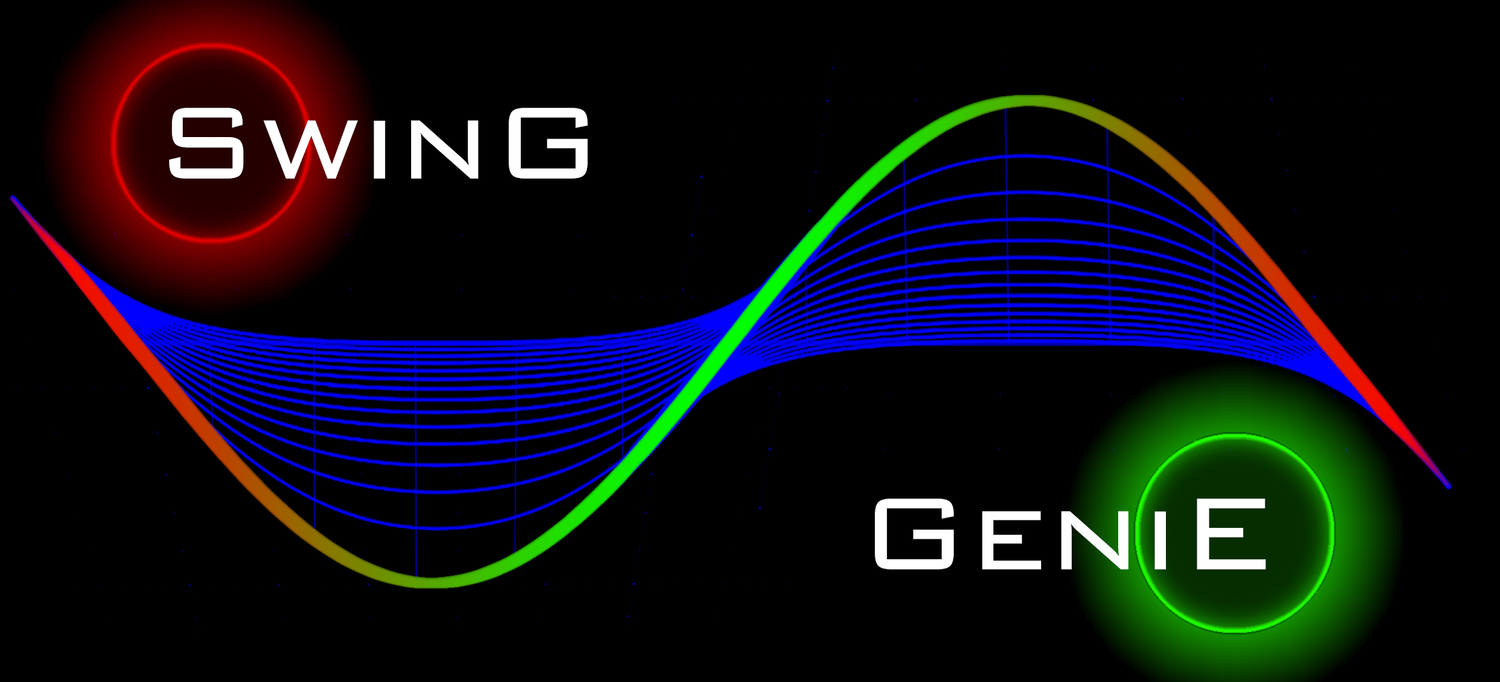Timing your trade exits is the most critical component of profitable trend and swing trading. The Momentum Trend (MOTREND) indicator (shown in the image below) was developed to dramatically improve your ability to accomplish this with a higher level of confidence. When the Short-Term Hurst Channel(STHC) merges with the top Long-Term Hurst Channel (LTHC) You are seeing you equity in a strong uptrend. This event is flagged by the STH channels blue line obscuring the green line of the LTH cycle channel. This triggers both a change in the background color of your price chart, and as indicated below, in a change in color of the background of the MOTREND indicator. Green when the STHC is touching the top of the LTHC and Red when the STHC is touching the bottom of the LTHC. You can access a detailed explanation and interpretation of Hurst Cycles on this page. When the STH channel moves to the top of the LTH channel you are seeing the beginning of a positive trend. The MOTREND indicators most important asset is the ability to provide traders with a clear indications that the trend is, in all probability, coming to an end. This is accomplished by the magnetic effect of the STH channel. As long as the price range of the trades remain within the short term channel, not exceeding the lower threshold of the bounding channel, the entire channel will remain attached to the top of the long term channel. This magnetic effect of the short term channel provides you with the ability to stay in your trade in the face of small, short-term reversals as long as those price changes don’t drag the STH channel lower. As soon as that occurs, your positive trend is demonstrating weakness and you should re-evaluate your trade decision.
The Stiffness signal also built into this indicator helps determine if you should continue in this trade after the Hurst cycles uncouple. The Stiffness indicator is simply counting the number of bars/days that your equity has remained above a moving average (MA) without penetrating that moving average. The indicator utilizes two adjustable variables, both a look-back or length for the moving average and a period of time or window that your are focused on looking for penetration. This is plotted as a series of columns plotted on two scales. Zero to 100 for uptrends (green columns) and 0 to -100 (red columns) for down trends. The period provides the trader with a window of time that you want to examin the test of the price crossing below the moving average.
The Stiffness indicator was describe in the trading journal; Technical Analysis of Stocks and Commodities, by Markos Katsanos, Nov 25, 2018. Penetration of the moving average most likely indicate an end to your trend. It is not uncommon for the price to bounce off of the moving average or slightly penetrate that MA at that time. For this reason the indicator allows you to set a level of penetration that will be ignored. The stiffness indicator provided in the MOTREND indicator differs from the one described in the TASC article in that ours provides both the positive and negative indications of penetration into the moving average from either side. This enables short traders to utilize this indicator as effectively as those taking long positions. It also differs in its ability to allow changing the moving average length. Having the ability to change both of these parameters allows the trader to dial in the exact sensitivity to match their trading style.
Finally the MOTREND indicator allows you to view what the price trend (F) is actually doing in relationship to the indicator. This allows you to understand the relationship between price changes and the Stiffness indicator. In order to plot the two together the range of prices is adjusted to be constrained within a +100 to -100 range. This is not a perfect process because it must be constrained relative to the current price volatility which could change dramatically in the next bar. This is why the price range can exceed the defined indicator range from time to time. This does not however alter in anyway the actual price change relationship of the current chart. The goal of adding price trend is provide greater insight into the strength of the trend and the likelihood that this trend is weakening.
Aroon indicators, described on this page, are useful in identifying new trends outside of the Tradingview environment. I use Aroon as a screening tool on Stockfetcher and Finviz to screen for new trading opportunities. New highs over a given period of time is also a useful screening parameter to find new trending trading opportunities.
If you read the history of the Turtles, you will realize two key point the turtles stressed: 1) Where you enter a trend is not as important as when you exit the trend, and 2) The greatest challenge to trend trading is accurately determining when the trend is ending, not just experiencing a short-term price reversals or reversion to mean. MOTREND provides traders with the tools to much more accurately determine if the equity you are considering has started to trend and if and when that trend is coming to an end.
The Momentum Trend (MOTREND) indicator (shown in the image below) was developed by determining when the Short-Term Hurst Channel(STHC) merges with the Long-Term Hurst Channel (LTHC) (A in image above). This event is flagged by the STH channels blue line obscuring the green line of the LTH cycle channel. This triggers both a change in the background color of your price chart, and as indicated below, in a change in color of the background of the MOTREND indicator. Green when the STHC is touching the top of the LTHC and Red when the STHC is touching the bottom of the LTHC. You can access a detailed explanation and interpretation of Hurst Cycles on this page. When the STH channel moves to the top of the LTH channel you are seeing the beginning of a positive trend. The MOTREND indicators most important asset is the ability to provide traders with a clear indications that the trend is, in all probability, coming to an end. This is accomplished by the magnetic effect of the STH channel. As long as the price range of the trades remain within the short term channel, not exceeding the lower threshold of the bounding channel, the entire channel will remain attached to the top of the long term channel. This magnetic effect of the short term channel provides you with the ability to stay in your trade in the face of small, short-term reversals as long as those price changes don’t drag the STH channel lower. As soon as that occurs, your positive trend is demonstrating weakness and you should evaluate your trade decision.
The Stiffness signal also built into this indicator helps determine if you should continue in this trade after the Hurst cycles uncouple. The Stiffness indicator is simply counting the number of bars/days that your equity has remained above a moving average (MA) without penetrating that moving average. The indicator utilizes two adjustable variables, both a look-back or length for the moving average and a period of time or window that your are focused on looking for penetration. This is plotted as a series of columns plotted on two scales. Zero to 100 for uptrends (green columns) and 0 to -100 (red columns) for down trends. The period provides the trader with a window of time that you want to examin the test of the price crossing below the moving average.
The Stiffness indicator was describe in the trading journal; Technical Analysis of Stocks and Commodities, by Markos Katsanos, Nov 25, 2018. Penetration of the moving average most likely indicate an end to your trend. It is not uncommon for the price to bounce off of the moving average or slightly penetrate that MA at that time. For this reason the indicator allows you to set a level of penetration that will be ignored. The stiffness indicator provided in the MOTREND indicator differs from the one described in the TASC article in that ours provides both the positive and negative indications of penetration into the moving average from either side. It also differs in its ability to allow changing the moving average length. Having the ability to change both of these parameters allows the trader to dial in the exact sensitivity to match their trading style.
Finally the MOTREND indicator allows you to view what the price trend (F) is actually doing in relationship to the indicator. This allows you to understand the relationship between price changes and the Stiffness indicator. In order to plot the two together the range of prices is adjusted to be constrained within a +100 to -100 range. This is not a perfect process because it must be constrained relative to the current price volatility which could change dramatically in the next bar. This is why the price range can exceed the defined indicator range from time to time. This does not however alter in anyway the actual price change relationship of the current chart. The goal of adding price trend is provide greater insight into the strength of the trend and the likelihood that this trend is weakening.
Aroon indicators, described on this page, are useful in identifying new trends outside of the Tradingview environment. I use Aroon as a screening tool on Stockfetcher and Finviz to screen for new trading opportunities. New highs over a given period of time is also a useful screening parameter to find new trending trading opportunities.














